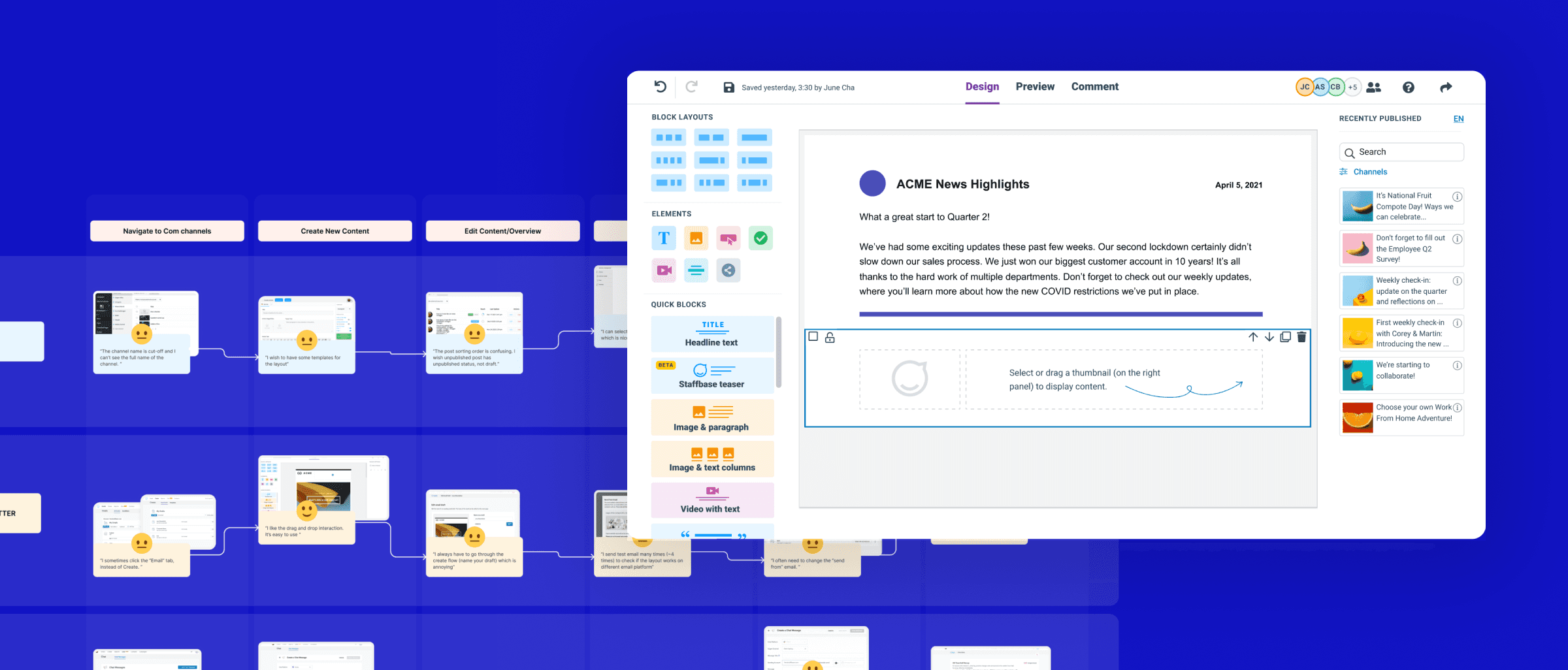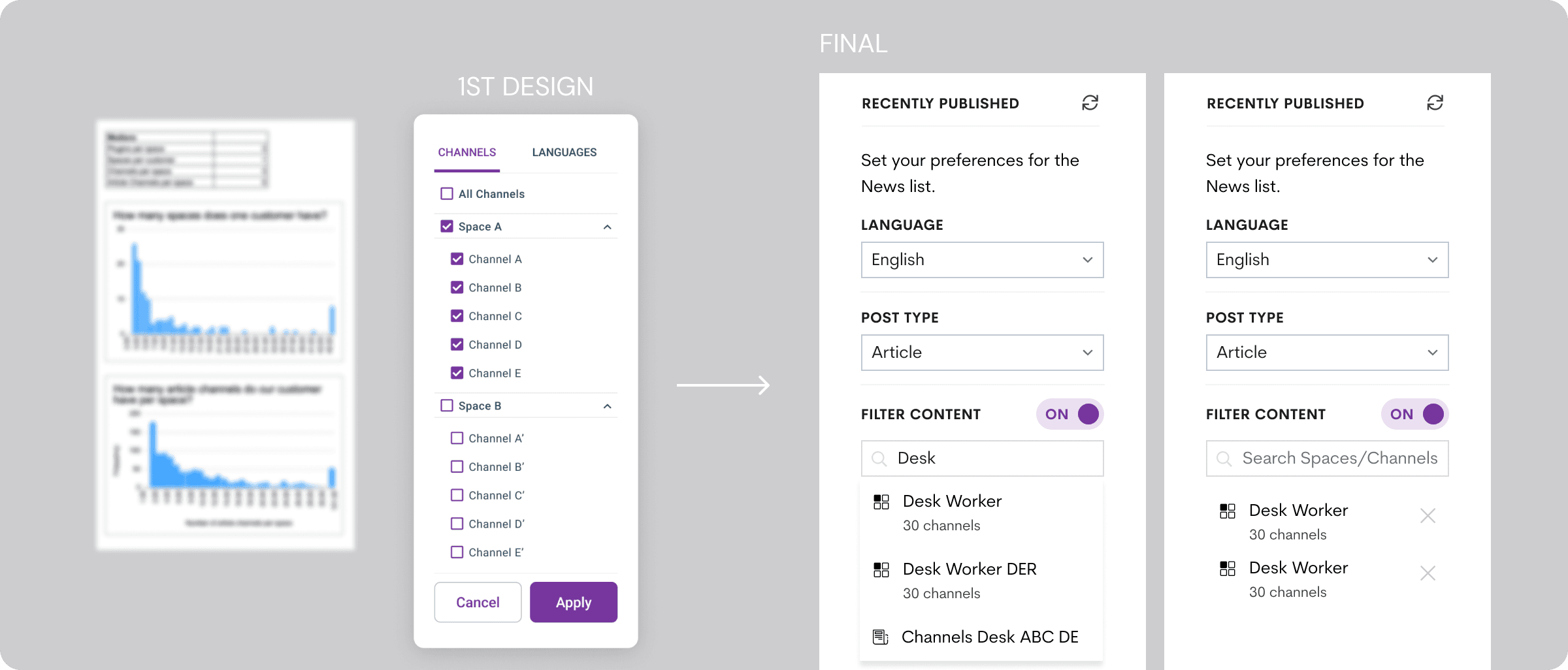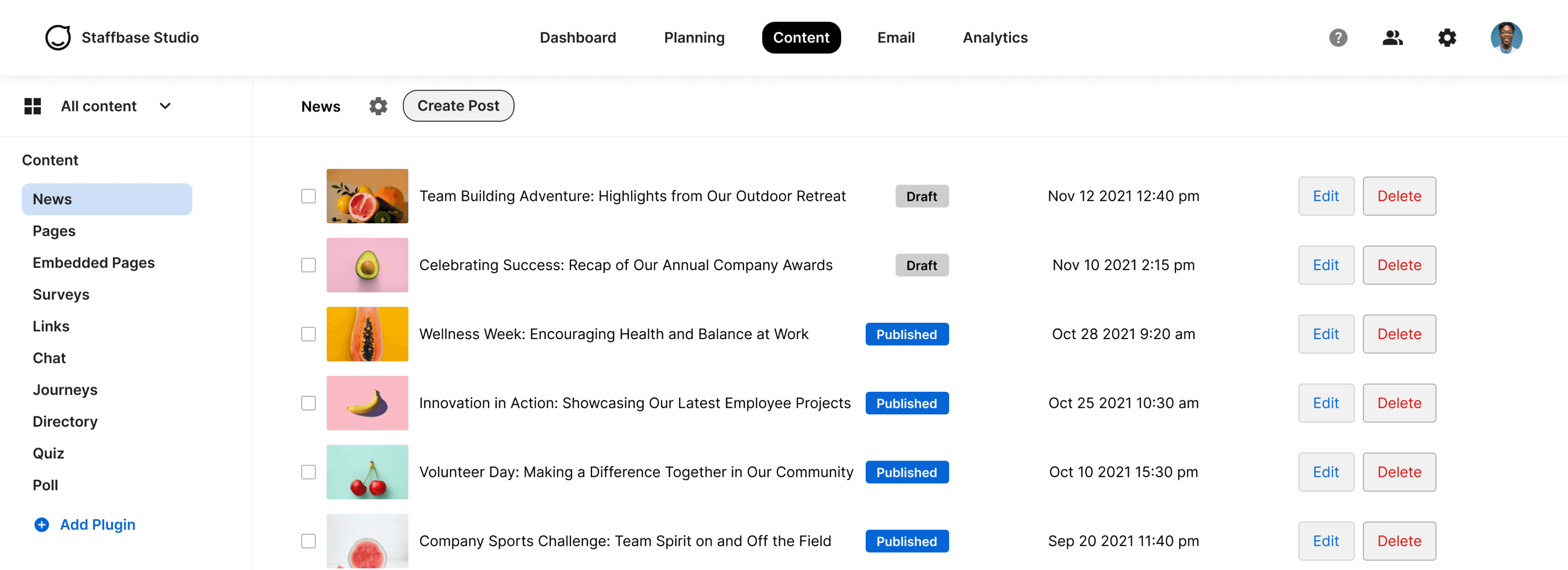Background
Responsibilities
As a designer, I worked closely with the Product Owner to help create and set up discovery workshops. I participated in customer meetings to gather feedback, designed and tested hypotheses, and presented the results to the team. My focus was on brainstorming and testing new ideas, refining technical aspects with the team, and delivering polished design solutions.
Expand Reach Through Email Newsletters

In the design process, I often rely on data to guide decisions. For example, while designing a panel for users to select posts to include in a newsletter, I considered Staffbase’s organizational structure, where posts are grouped by channels, and channels are organized within spaces.
According to the data we have, many of our big clients have more than 10 spaces and numerous channel. For this reason, the initial checkbox design for spaces and channels wasn’t scalable. To improve efficiency, I redesigned the panel with a search function and suggested selections, making it faster and more user-friendly for editors.

Enhancing Post-Performance Insights for Editors
Context:
Editors needed better visibility into how their content was performing, including which channels were driving the most traffic, to refine their publishing strategy effectively.
Approach:
I collaborated with the team to conduct user interviews and facilitate workshops, gathering insights into editors' specific data needs. We analyzed the available data and explored the most effective ways to present key metrics in a clear, actionable format.
Building a Scalable Design System for Consistency
Context:
Without a structured design system, the platform lacked visual and functional consistency, making it difficult to maintain a seamless user experience and scale efficiently.
Approach:
As part of the team, I contributed to establishing the foundation of the design system by conducting a design audit across teams to identify inconsistencies. We defined essential design primitives, including font scales and color palettes, created a core set of reusable components, and established standardized naming conventions and design tokens. Additionally, we introduced documentation tools, collaborated closely with developers to ensure smooth implementation, and set up a governance process for future scalability. Existing designs were updated to align with the new system, ensuring a unified experience.
Outcome:
The newly established design system improved consistency across the platform, enhanced collaboration between designers and developers, and laid the groundwork for the successful redesign of the entire studio experience.
© Yen Dang 2024
Designed and crafted by me
